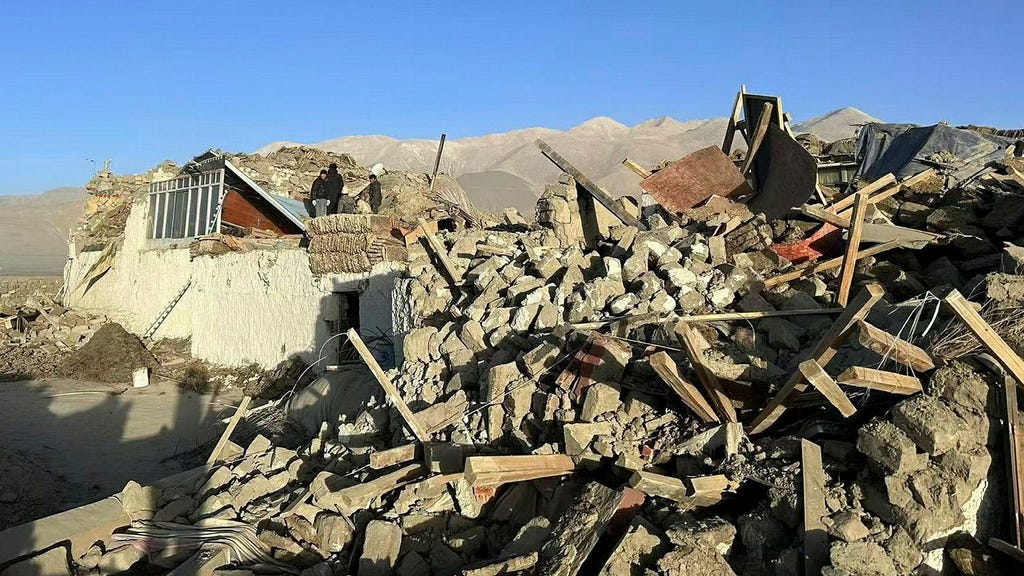The devastating earthquake that struck southern Tibet near the Nepal border on a cold January morning serves as a stark reminder of the immense power of nature and the vulnerability of human settlements in the face of such seismic events. The magnitude 7.1 quake, as measured by the United States Geological Survey (USGS), struck at 9:00 AM local time, sending shockwaves through the mountainous region, leaving a trail of destruction and loss across Tibet, Nepal, Bhutan, and India. The epicenter, located approximately 10 kilometers beneath Shigatse in Tingri, a region familiar to mountaineers as part of the northern route to Mount Everest, highlights the precarious position of communities nestled amidst these towering peaks. The freezing temperatures, reaching down to -18 degrees Celsius, further compounded the challenges facing both the affected population and the rescue teams racing against time to find survivors and provide aid.
The immediate aftermath of the earthquake painted a grim picture of collapsed buildings, disrupted infrastructure, and widespread panic. Early reports indicated at least 53 fatalities, a number tragically expected to rise as search and rescue operations continued. Thousands of homes were reduced to rubble, rendering countless families homeless in the harsh winter conditions. The scale of the devastation prompted swift action from Chinese President Xi Jinping, who declared a state of emergency and pledged unwavering commitment to the rescue efforts. He emphasized the critical need for aid delivery, particularly focusing on providing shelter and warmth against the bitter cold. This immediate response reflects the urgency and gravity of the situation, underscoring the importance of international cooperation and humanitarian assistance in mitigating the impact of such disasters.
Local authorities under the communist leadership received immediate instructions to elevate their preparedness for potential aftershocks, a common and often dangerous occurrence following major earthquakes. These aftershocks, while typically less powerful than the main quake, can cause further damage to already weakened structures and trigger landslides in mountainous terrain, posing significant risks to both survivors and rescue personnel. The focus on preparedness underlines the understanding that earthquake response is a multi-phased process requiring ongoing vigilance and adaptation to evolving threats. The state-run Xinhua news agency played a crucial role in disseminating information and coordinating relief efforts, highlighting the importance of timely and accurate communication in disaster management.
The scale of the disaster necessitated a massive mobilization of resources and personnel. Over 1,500 rescue workers were deployed to assist the affected communities, braving treacherous terrain and freezing temperatures to search for survivors and provide emergency aid. The use of drones in the search operations underscores the innovative approaches being employed to enhance efficiency and reach remote areas that might otherwise be inaccessible. These technological advancements play a crucial role in maximizing the chances of finding survivors and providing timely assistance. The collaborative efforts of rescue teams, local authorities, and international aid organizations are testament to the global community’s commitment to supporting those affected by such catastrophes.
The earthquake’s impact extended beyond the immediate destruction of homes and infrastructure, leaving a deep scar on the social fabric of the affected communities. The loss of life, the displacement of families, and the disruption of livelihoods represent a significant setback for the region. The psychological trauma experienced by survivors, witnessing the devastation and loss of loved ones, presents a long-term challenge that requires ongoing support and mental health services. The rebuilding process, which will undoubtedly be lengthy and complex, requires a multi-faceted approach encompassing infrastructure reconstruction, economic recovery, and psychosocial support for the affected populations.
The Tibetan earthquake serves as a sobering reminder of the constant threat posed by natural disasters and the importance of disaster preparedness and response mechanisms. The swift action taken by the Chinese government, the mobilization of rescue teams, and the utilization of technology in the search and rescue efforts demonstrate the critical role of preparedness and efficient response in mitigating the impact of such events. However, the scale of the devastation highlights the ongoing need for investment in earthquake-resistant infrastructure, early warning systems, and community-based disaster preparedness programs. The international community’s response to this tragedy underscores the importance of global collaboration and solidarity in the face of such devastating events. The long-term recovery process will require sustained effort and commitment from all stakeholders to ensure the affected communities can rebuild their lives and livelihoods and emerge stronger from this tragedy.














